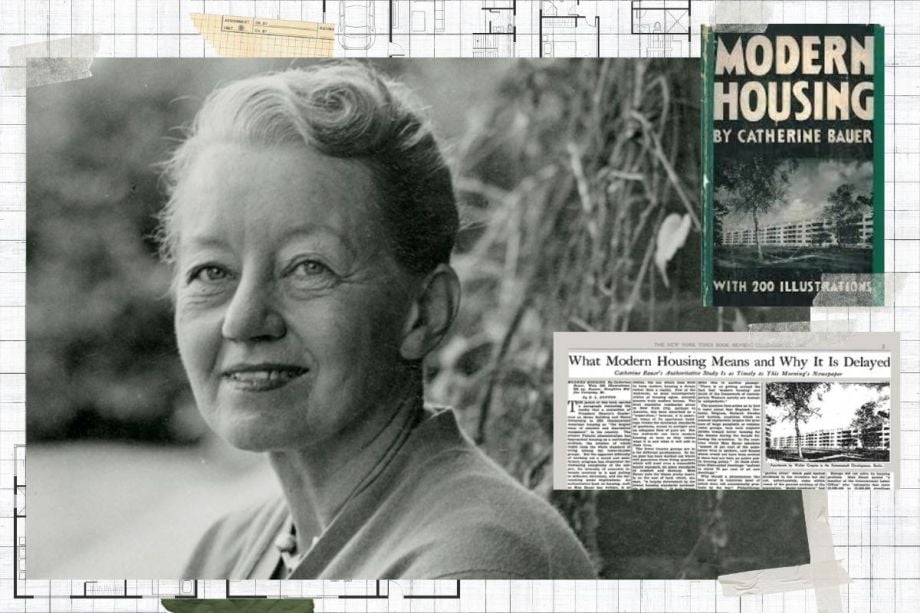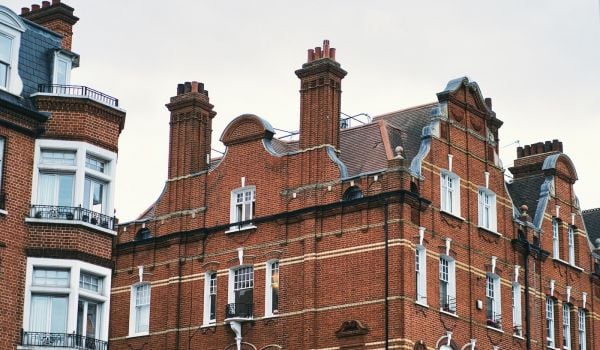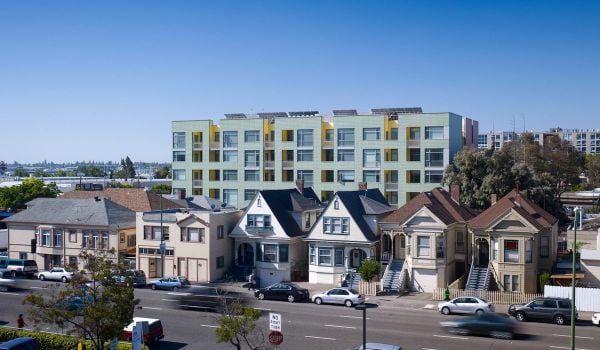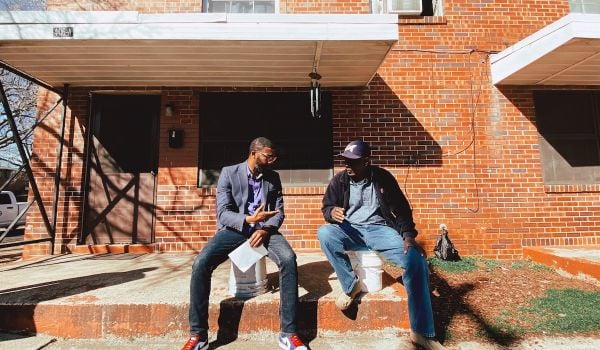In 1934, the architectural critic Catherine Bauer published one of the most important books ever written on housing. “Modern Housing,” based on years of research in Europe, recounts the sharp differences between the American and European approaches to the similar housing crises both regions experienced after World War I.
Political movements for dignified housing forced many European nations, such as England, Germany and the Netherlands, to invest in what Bauer termed “modern housing”: non-speculative, affordable homes with adequate space, light, ventilation and community space. These modest dignified homes provided a sharp contrast to the speculative spree of development dominant in 1920s America.
In “Modern Housing,” Bauer argued that to make American housing truly modern, it could not rely on the speculative market. Instead, it must become a “public utility,” which she defines as housing that is financed with public investment, subsidized when necessary to meet the needs of lower-income populations, and built to high-quality standards. She suggests several tactics to achieve these goals, such as publicly issuing loans or bonds to finance housing developments, arguing that publicly-issued debt can have lower interest rates than private lenders seeking to make a profit. She also argues that cities can acquire land to quell speculative pressures, pointing out that this potentially reduces project costs in the future.
One of the most salient arguments Bauer makes in “Modern Housing” is that modern homes have not been built in America because the nation lacks a strong, universalist movement for decent housing. She argues that successful housing models were created by and for the citizens who organized for dignified housing, like German trade unionists and Viennese socialists. Bauer herself later spent several years attempting to build this movement as the Secretary of the Labor Housing Conference, a New Deal-era coalition of planners, architects and labor unions who organized to build dignified, permanently affordable, mixed-income housing projects with investment from unions and the government. While the Labor Housing Conference never got full buy-in from unions, and while the real estate industry successfully lobbied to prevent public housing programs from competing with the private market, the Conference’s work laid a foundation that labor unions have begun to take up amid today’s housing crisis.
Bauer Power
“If only a small part of the vast energy which was once directed toward individual home-ownership were now organized to demand a realistic program of modern housing — the best dwellings that planners can plan and that labor and materials can build (and we have an abundance of all three) – then there would be an American housing movement indeed,” Bauer wrote then.
In 2024, Bauer’s critique of the American housing system is as relevant as ever.
By her standards, there is very little “modern housing” in the United States today. In New York City, where I live, this crisis is particularly acute – housing costs skyrocketed by 68% over the past decade, forcing more than a third of tenants to spend over half their income on rent. For many New Yorkers, the rapid rise in housing costs has forced them out of their homes, as homelessness has reached the highest levels since “Modern Housing” was initially published.
Public policy and establishment politicians still largely approach housing as a financial asset for the owner rather than a consumption good or a source of stability and safety for the city’s workforce. In recent years, landlords purchased buildings only to sell them a few years later at a high rate of return, or over-leverage their buildings to extract equity – all the while neglecting the maintenance and capital replacement needed to keep them livable for tenants. These speculative actions hurt everyday New Yorkers, as tenants in buildings with high debt burdens and inflated prices face greater threats of eviction and unsafe building conditions.
However, tenants in many cities are more organized than ever, and have wielded their collective power to win repairs, stronger rent laws, and even rent freezes. In 2019, a diverse coalition of tenants won major reforms to the state’s rent stabilization laws: expanding the program across the entire state, limiting allowable rent increases and stopping vacancy deregulation. Tenants in Kingston, New York became the first group to successfully opt-in to the new system; Kingston renters secured a majority of support on the new local rent board and won a 15% rent reduction. (The reduction is currently tied up in court.)
This movement-building is happening every day – tenants across New York have launched successful rent strikes, built campaigns for community land trusts, and organized to purchase their buildings and convert them into shared equity cooperatives. And now, 90 years after “Modern Housing” was first published, New York State tenants and their allies in the labor movement are building on Catherine Bauer’s vision by advocating to build modern housing at scale.
Making social housing real
Earlier this month, New York State Assemblymember Emily Gallagher and State Senator Cordell Cleare introduced a bill to create a statewide Social Housing Development Authority (SHDA). By treating housing as a public utility, as Bauer advocated for, rather than as a profitable asset, the SHDA offers an avenue toward permanently affordable housing for all New Yorkers.
Much like Bauer’s definition of “modern housing,” social housing refers to homes that are democratically governed, permanently affordable, and protected from market pressures. Gallagher and Cleare’s proposed authority would create social housing by financing, acquiring, building, and rehabilitating a range of housing models, including public rentals, limited equity co-ops, and community land trusts. SHDA homes would be built with union labor to ensure all workers are paid a dignified wage, and all buildings would be built or retrofitted to meet vital climate goals.
As proposed, the SHDA has an innovative board structure that will both empower residents and protect the authority from gubernatorial overreach. Three of the Board’s 19 members are directly appointed by the governor, while eight board members are directly elected by SHDA residents, giving residents democratic power to make decisions about the management and maintenance of their homes.
The legislation also adopts the universalist, mixed-income model Bauer advocated for in “Modern Housing.” At least 25% of SHDA units would be reserved for those making 30% of area median income or less, while no more than 33% of units could go to those making more than the area median income. As a result, the SHDA could provide homes for a wide range of New Yorkers, from homeless families in Manhattan to union nurses in Middletown, with more affluent tenants helping to subsidize the rents of lower-income ones. The legislation also ensures no resident will have to dole out over half of their paycheck just to stay in their home — initial housing costs will be capped at 25% of resident income.
The SHDA also integrates many of Bauer’s ideas around housing finance – instead of depending on private, profit-seeking lenders, the authority would invest public funds to create permanently affordable homes. Since private developers, banks and other private lenders are intent on growing their profit margins, they can increase the cost of new housing by charging high interest rates or issuing hefty developer fees. For example, a recent study by Hunter College graduate students showed that eliminating developer fees could reduce overall development costs by 6-9%, making SHDA housing more affordable for prospective renters. The authority’s independence from exploitative, profit-driven lenders and developers would enable it to sustainably build housing for less. As Bauer argued, good houses can be cheaper than bad ones.
Perhaps unsurprisingly, due to the legislation’s commitment to union labor, the SHDA has also revitalized the labor-housing advocate alliance that was so central to Catherine Bauer’s work. A coalition of unions, including United Auto Workers Region 9A, the United Federation of Teachers and the Building Trades Council, have all announced their formal support for the bill, joining forces with tenant advocates to fight for dignified housing. By bringing workers, tenants and advocates together to demand a Social Housing Development Authority, the foundations of the housing movement Bauer called for are finally being built.
Of course, a Social Housing Development Authority alone would not suddenly solve the housing crisis New York State’s nearly 500,000 public housing tenants face, thanks to decades of underfunding. Bauer herself was a major advocate for the Housing Act of 1937, which authorized the creation of municipal housing authorities, but she opposed the legislation’s harsh limits on construction costs.
Today, many public housing developments across the state are in disrepair, as the state’s public housing authorities have as much as $80 billion in outstanding capital needs. To help protect this neglected model of social housing, the SHDA must support the work of existing public housing agencies and advocate for increased Section 9 funding.
Years of intentional mass tenant organizing, from Rochester to Ridgewood, have created the conditions for New Yorkers to demand better housing. Creating a statewide Social Housing Development Authority will allow residents – and not real estate capitalists – to take control of their homes.
Nine decades after the publication of “Modern Housing,” Catherine Bauer’s vision for a publicly funded, labor-supported, mixed-income housing program has the potential to come to fruition.
Katelin Penner is a master's student in Urban Planning at Hunter College and an organizer based in Bushwick, Brooklyn. Her academic work focuses on the intersections of municipal austerity, gentrification, land use, social/public housing, community resilience and the influence of late-stage capitalism on the urban landscape. Her organizing work focuses on housing justice, tenants' rights and land use.

















Add to the Discussion
Next City sustaining members can comment on our stories. Keep the discussion going! Join our community of engaged members by donating today.
Already a sustaining member? Login here.